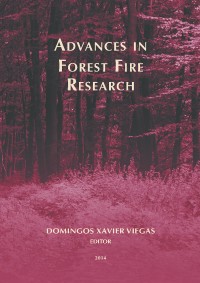Please use this identifier to cite or link to this item:
https://hdl.handle.net/10316.2/34335| DC Field | Value | Language |
|---|---|---|
| dc.contributor.author | Batista, Antonio Carlos | |
| dc.contributor.author | Tetto, Alexandre França | |
| dc.contributor.author | Deppe, Flavio | |
| dc.contributor.author | Grodzki, Leocádio | |
| dc.date.accessioned | 2014-10-24T13:37:19Z | |
| dc.date.accessioned | 2020-09-09T21:31:33Z | - |
| dc.date.available | 2014-10-24T13:37:19Z | |
| dc.date.available | 2020-09-09T21:31:33Z | - |
| dc.date.issued | 2014 | - |
| dc.identifier.isbn | 978-989-26-0884-6 | |
| dc.identifier.uri | https://hdl.handle.net/10316.2/34335 | - |
| dc.description.abstract | Forest fires are a global phenomenon due to the interaction between climate, fuels and human activities. Fires are also a critical component in the dynamics of planet earth and atmosphere. Recent advances in remote sensing products gathered via sensors on board satellites, have demonstrated the possibility of fire identification and monitoring on a global scale. The weather and climate are the major factors directly affecting fire and are being modified due to climate change caused mainly by man. There is an expectation of most researchers that changes in climate over the next 100 years will cause a major impact on forest ecosystems. The aim of this study was to determine, by decade, forest fire risk zoning for the State of Paraná, Brazil, based upon the scenarios predicted by the Intergovernmental Panel on Climate Change (IPCC) in 2007. Vegetation maps, fuel moisture, Monte Alegre Formula (FMA) for forest fire risk, slope, population density and road network, were used. These information, after being classified according to the risk of fire hazard, were weighted in a mathematical model. The determined values were then used to compose the Forest Fires Zoning Risk (ZRIF) per decade for the State of Paraná. Results showed that for the best scenario, which considers an increase of 1.8 ºC in the average temperature of the Earth by year 2100, there will be an increase in class extreme risk of forest fires, rising from 1.80% of the area of the State in 2020 to 8.49% in 2100. The same applies to the class of very high risk, which rises from 10.43% (2020) to 32.38% (2100). For the worst scenario, which considers an increase of 4.0 ºC in the average temperature of the Earth by 2100, the class of extreme risk rises from 2.18% (2020) to 22.72% (2100). The higher risk class rises from 13.93% (2020) to 55.95% (2100). It was concluded that, if the IPCC predictions were confirmed, there will be an increase in the number of occurrences and area affected by forest fires in the State of Paraná, which will require integrated actions to prevent and suppress forest fires to minimize environmental, social and economic damages. | eng |
| dc.language.iso | eng | - |
| dc.publisher | Imprensa da Universidade de Coimbra | por |
| dc.relation.ispartof | http://hdl.handle.net/10316.2/34013 | por |
| dc.rights | open access | - |
| dc.subject | Forest fire risk | eng |
| dc.subject | Climate change | eng |
| dc.subject | Forest fire zoning risk | eng |
| dc.subject | FMA fire risk | eng |
| dc.title | Impacts of climate change on forest fire risk in Paraná State-Brazil | por |
| dc.type | bookPart | por |
| uc.publication.firstPage | 1182 | - |
| uc.publication.lastPage | 1192 | - |
| uc.publication.location | Coimbra | por |
| dc.identifier.doi | 10.14195/978-989-26-0884-6_129 | - |
| uc.publication.section | Chapter 4 - Fire Risk Assessment and Climate Change | por |
| uc.publication.digCollection | PB | por |
| uc.publication.orderno | 129 | - |
| uc.publication.area | Ciências da Engenharia e Tecnologias | por |
| uc.publication.bookTitle | Advances in forest fire research | - |
| uc.publication.manifest | https://dl.uc.pt/json/iiif/10316.2/34335/211519/manifest?manifest=/json/iiif/10316.2/34335/211519/manifest | - |
| uc.publication.thumbnail | https://dl.uc.pt/retrieve/11174394 | - |
| uc.publication.parentItemId | 53868 | - |
| uc.itemId | 70319 | - |
| item.grantfulltext | open | - |
| item.fulltext | With Fulltext | - |
| Appears in Collections: | Advances in forest fire research | |
Files in This Item:
| File | Description | Size | Format | |
|---|---|---|---|---|
| 978-989-26-0884-6_129.pdf | 2.12 MB | Adobe PDF |  |
Items in DSpace are protected by copyright, with all rights reserved, unless otherwise indicated.
